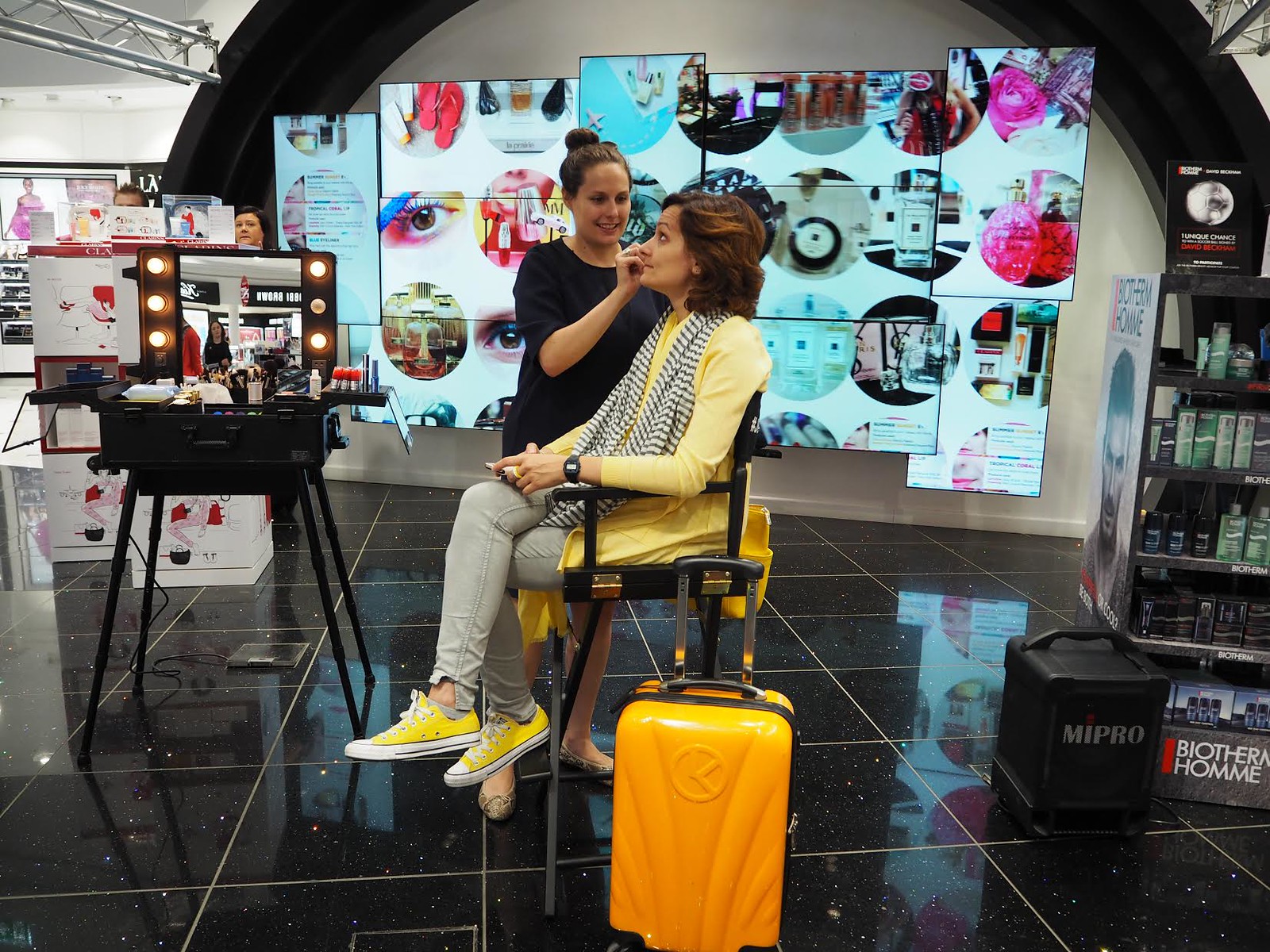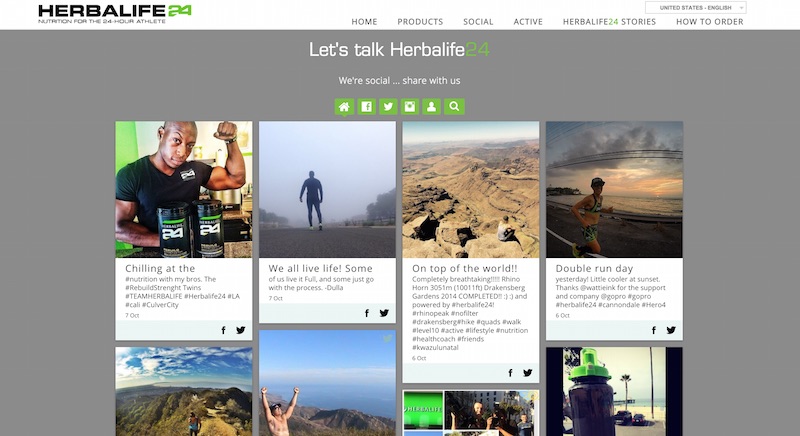Fun fact: 93% of customers expect companies to have a presence on social media.
Which is great, because most companies are on at least one social media platform if not more.
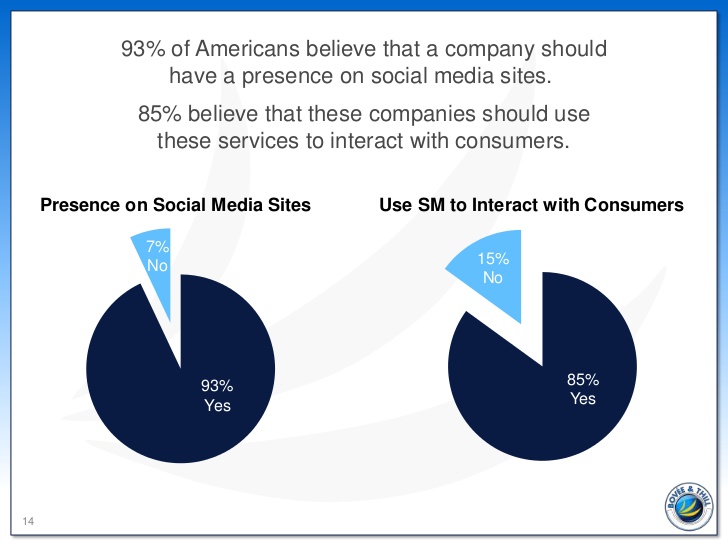
But with so many different channels and so many different platforms for interacting with potential customers on, it can be difficult to know where to spend your time and how you should be spending it in order to drive more sales.
The thing is, social media can either be a treasure trove of potential revenue or an absolute barren wasteland – it all depends on how you’re using it.
But let’s get real for a moment. Most marketers don’t think social media can drive revenue, it’s simply a communication channel; a place to share content. But, by using authentic content, you can amplify your marketing efforts and increase all aspects of your business (including revenue).
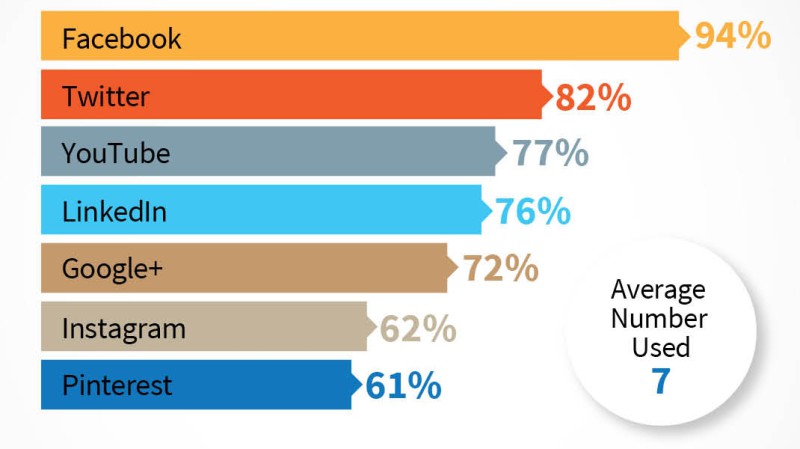
The average brand is on seven different social media channels. Source.
So, if you want to generate more revenue, how can you use the powers of authentic content?
Use Social Media Content as Digital Signage in Retail
Digital signage is everywhere these days, from ad boards in the metro to social media streams in shops and restaurants.
In fact, digital signage is so prominent in daily life that 63% of us see at least one form of it every single day.
And, when you know that digital signs capture 400% more views than static signs, it’s easy to see why they’re everywhere.
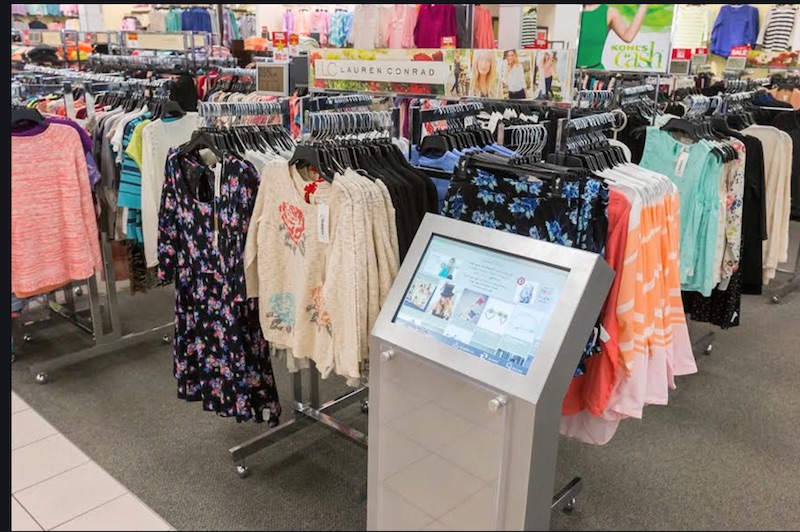
Despite consumers expecting brands to be on social media, 84% of consumers are more likely to trust content created by their peers rather than the brand itself.
By implementing in-store screens that show social media shares from previous customers, real-time reviews, and user generated images of stock, you’re harnessing the power of both digital signage and social media ROI.
But the best part? Sharing social media streams at the point of sale (like in-store) can increase conversions by 7%.
Add Social Media Content to Websites to Increase Purchases
Your website is one of the most important steps in the customer journey. This is where potential buyers read all about your products and services and make the decision to hit the buy button or navigate away.
Research has shown that the impact of social media on purchasing decisions is huge. In fact, a whopping 71% of consumers are likely to purchase something based on social media referrals.
And, taking that one step further, an even bigger 74% of consumers actively rely on social media when they’re making a purchasing decision.
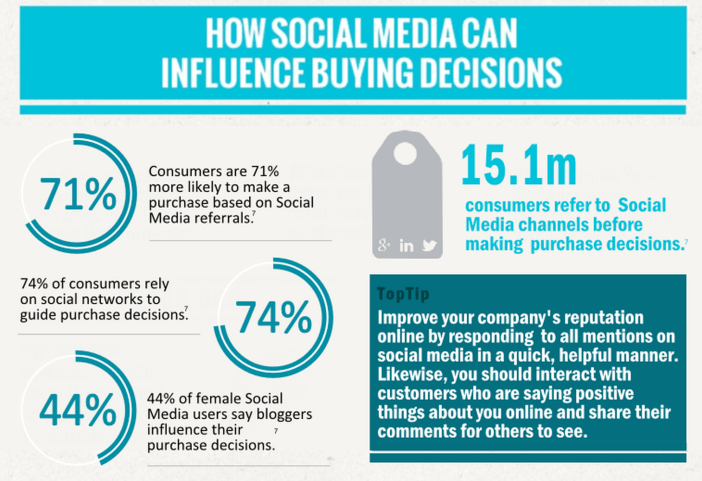
The thing to remember here is that, even though a potential customer has landed on your site, they still might not buy from you.
This all boils down to the psychology behind buying decisions, which are actually a lot more complex than you might think. Consumers today are naturally suspicious, especially of sleek branded content that has been whipped up by a brand’s marketing department in order to generate more sales.
Instead of listening to this, they want to hear real stories from real customers. They trust their peers, and this makes a huge impact on their buying decisions.
So, by implementing a social media wall on your website, you’re tapping into the need by consumers to hear from other customers in order for them to make a positive purchasing decision.
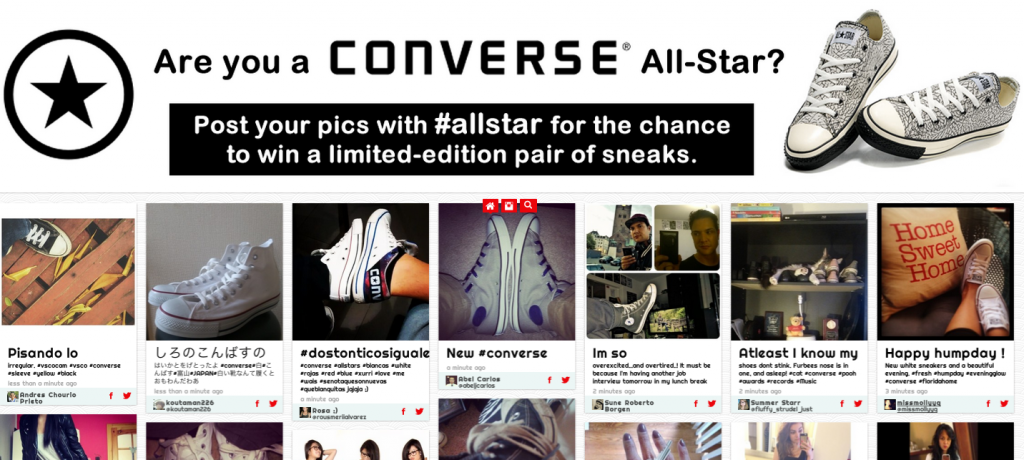
You can do this like Converse, by simply adding an extra page to your site especially for customer generated social media content, or you can get creative, like using user generated images next to products instead of paid-for stock images or professional shots.
Use Social Media Content for Paid Ads
The average paid ad costs 12% more than it did two years ago, and they’re reaching less people.
Judging by those numbers, it seems that paid ads are on the decline among marketers, but there is a way you can still leverage them so they perform well with your audience.
When you add in social media content that has been produced by previous customers and fans, you can increase the chances of your paid ads performing well.
According to research, 54% of adults online regularly create and share photos and videos, many of which are related to brands they have bought from. Images are the most common form of UGC created, especially by millennials, giving you access to a library of photos to use when advertising your brand.
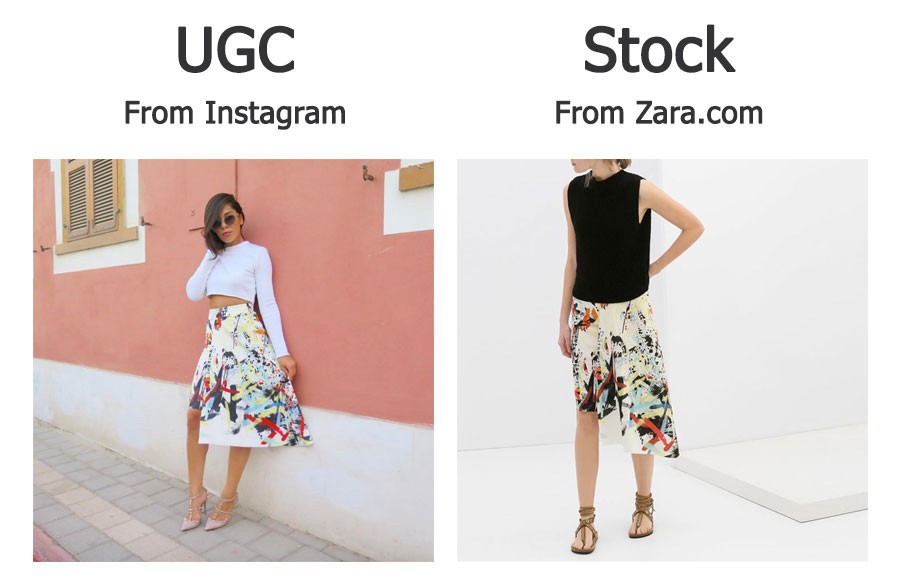
In a study run by Bllush, stock imagery in paid ads was tested against user generated content in paid ads with fascinating results. In all instances, the consumer-generated photos outdid the polished professional photos for click-throughs.
This is because consumers can relate to real-life images. They can picture themselves in a user-generated photo more than they can in a shiny stock image.
But you don’t have to limit yourself to images.
In fact, 29% of UGC is made up of product reviews, which can be added to paid ads to engage potential buyers and give them the peace of mind they need to purchase your product.
Use Employee Generated Content to Drive New Opportunities
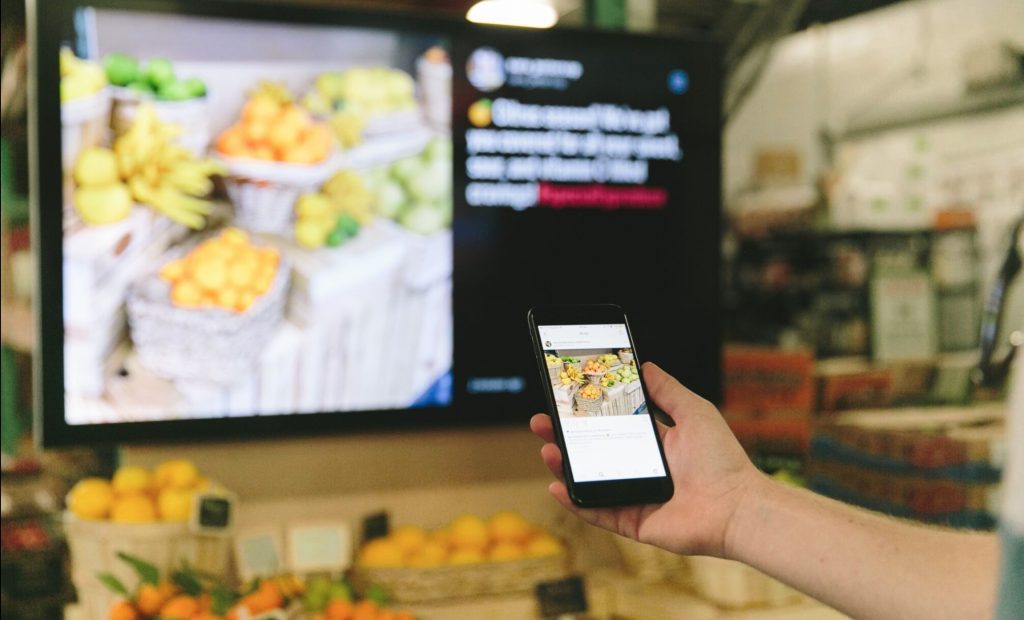
Specialty Produce, a family-run food business, leveraged content created by their employees to create new opportunities for both staff and clients.
Their goal was to “engage employees and inspire a friendly competition”, bridging the gap between the two sides of their business: the farm side and the restaurant side.
Team members were encouraged to share moments on social media so other employees could see how their work contributed to the bigger picture, creating a cohesive and engaged workforce.
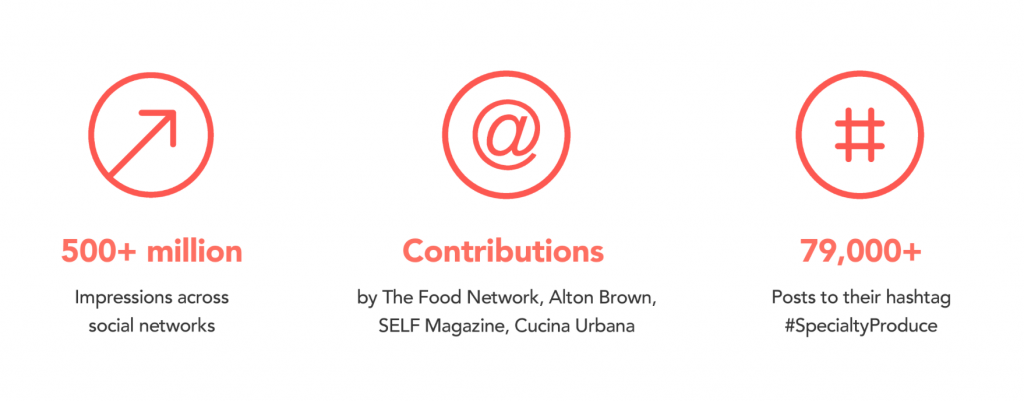
As a result, the campaign inspired employees and increased understanding of each individual’s impact on the company, which led to more engagement from employees.
What’s more, the increased engagement of employees led to better service for their customers.
A study from Wunderman examines the new phenomenon of “wantedness” when it comes to consumer experience. Basically, this refers to the “degree to which a brand proves their commitment to earning a customer’s business across every touch point and throughout the entire path to purchase.”
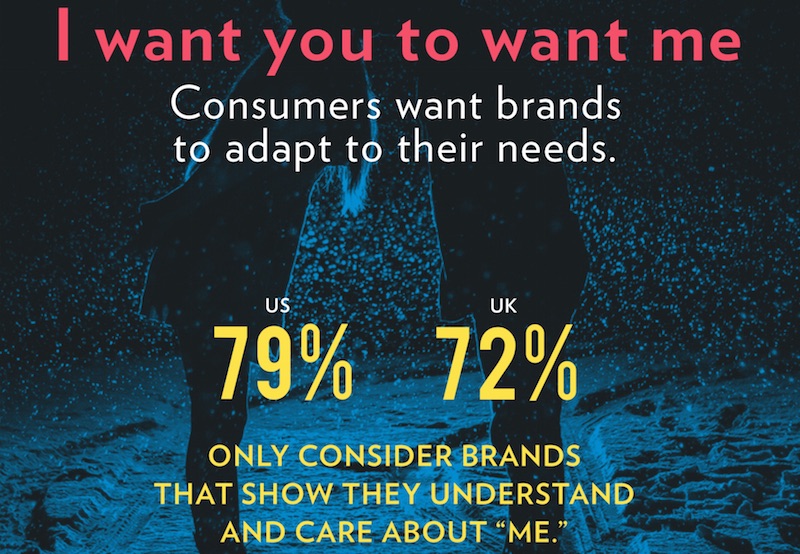
In the same study, 79% of US respondents said they’d only ever consider buying from brands that showed they cared for and understood their consumers.
And, as Specialty Produce proved with their campaign, an engaged workforce leads to better customer care.
Use Social Media Content as Brand Assets
Over the past year, social media contributors have increased by 176 million and, with between two and four billion image uploads on social media every day, there is a ton of content out there just waiting to be used.
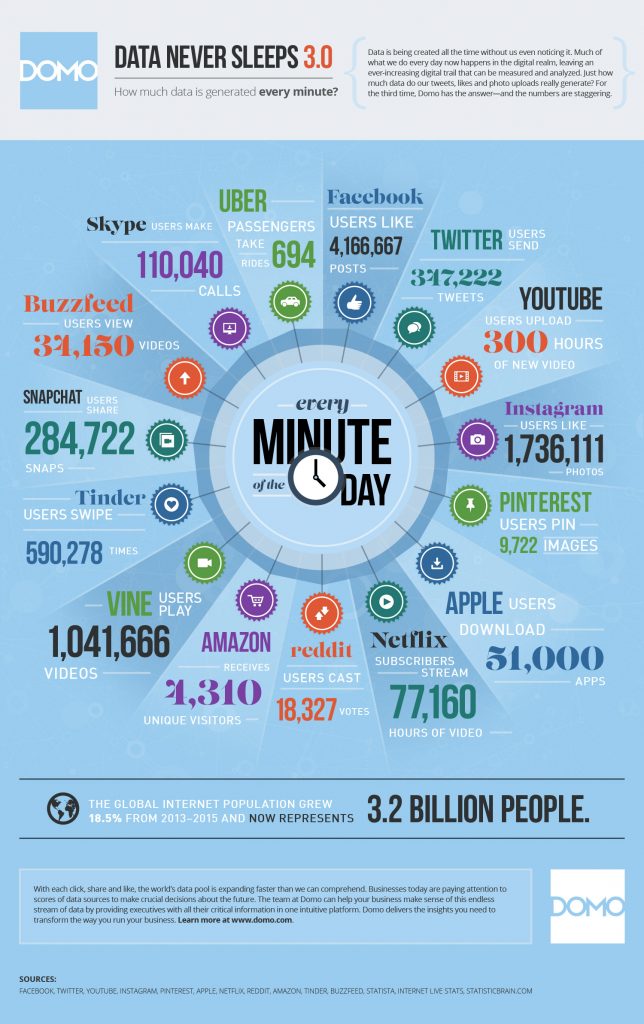
When you tap into images, reviews, and comments your previous buyers have made, you’re not only tapping into the kind of content that consumers listen to the most, but you’re saving yourself some money.
Sure, generating a library of assets from UGC may not directly drive revenue, but it will cut the costs of hiring designers and freelancers which translates into a healthier bottom line.
Here’s a quick run-down of how you can build a UGC library for your brand:
- Create a hashtag for customers to use so all the content can be collected in one place
- Publish this hashtag across social media, via email, and via traditional marketing methods
- Regularly check for new images and content
- Ask for permission (whether that’s by outright asking social media sharers if you can reuse their content, or by implicitly implying permission via a hashtag)
Take Advantage of Social Media Aggregators to Fuel Fundraising Campaigns
Social media doesn’t just have to be used to boost revenue, it can also be tapped into to generate awareness and engagement in fundraising campaigns.
Take Purdue University as an example.
Earlier this year, they raised more than $28 million in just 24 hours for their Annual Day of Giving.
They used TINT and the power of UGC to generate more than 32 million social impressions, which was a huge 190% increase from their 2015 efforts.
The team at Purdue use a range of tactics to encourage people to get involved on social media, like the “Tweet for a sweet” initiative, where students get a sweet if they share a Tweet about their activities.
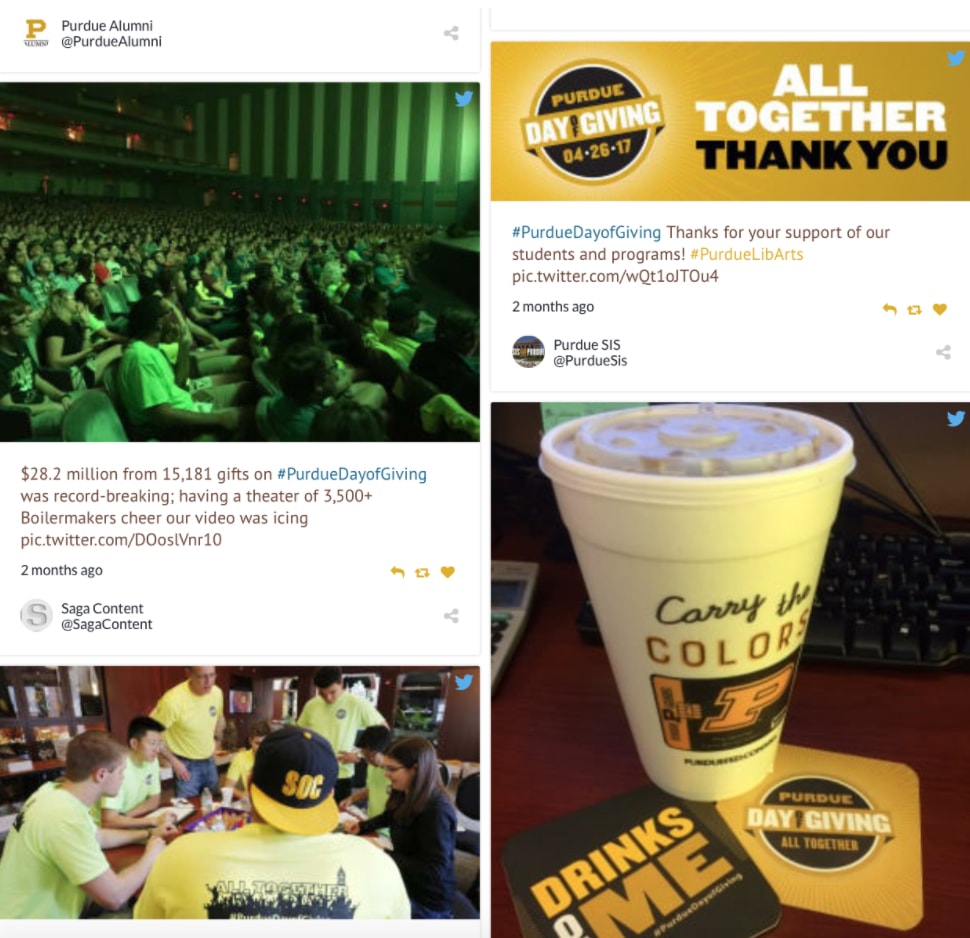
As the UGC was being created, Purdue University reused it in different ways, including in email newsletters, on digital signs around campus, and on a designated website landing page to raise even more excitement around the event.
Leveraging Social Media ROI to Drive Revenue
The key to leveraging social media ROI to drive revenue boils down to this: trust.
Authentic content builds relationships. Relationships are built on trust. Trust drives revenue.
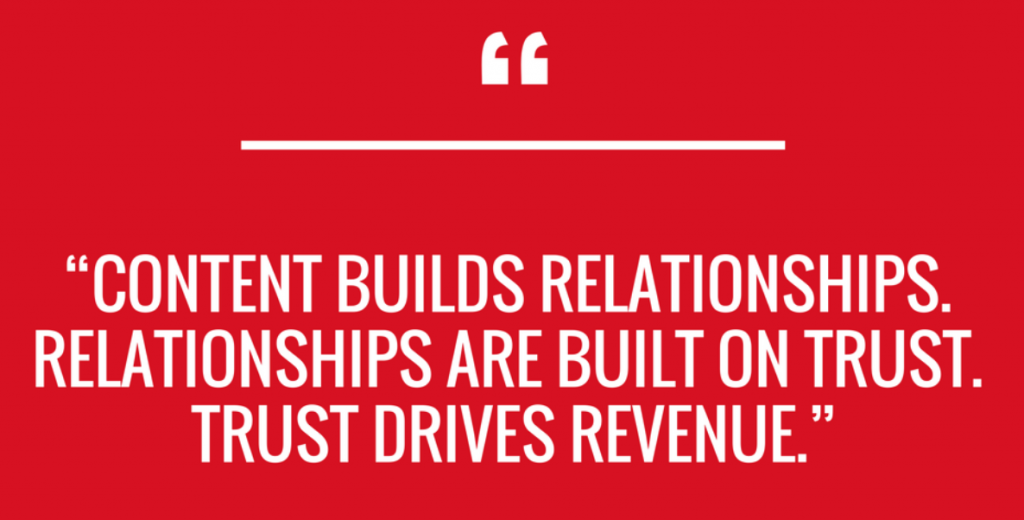
These days, consumers are turning to their peers and fellow customers to help make their purchasing decisions.
The interactive and social nature of social media means they have endless opportunities to learn about your brand via other customers and to build real-time relationships with you.
By implementing customer-created content from social media in a range of different ways and at various points throughout the customer-buying journey, you’re giving potential buyers the inspiration and encouragement they need to click “buy”.
Whether you share social streams in-store, put up a designated page on your website for social reviews, or fuel a fundraising campaign with social media, you’re going to see an increase in revenue.
How will you be implementing social media to drive revenue over the next year? Schedule time with our Social experts today!

